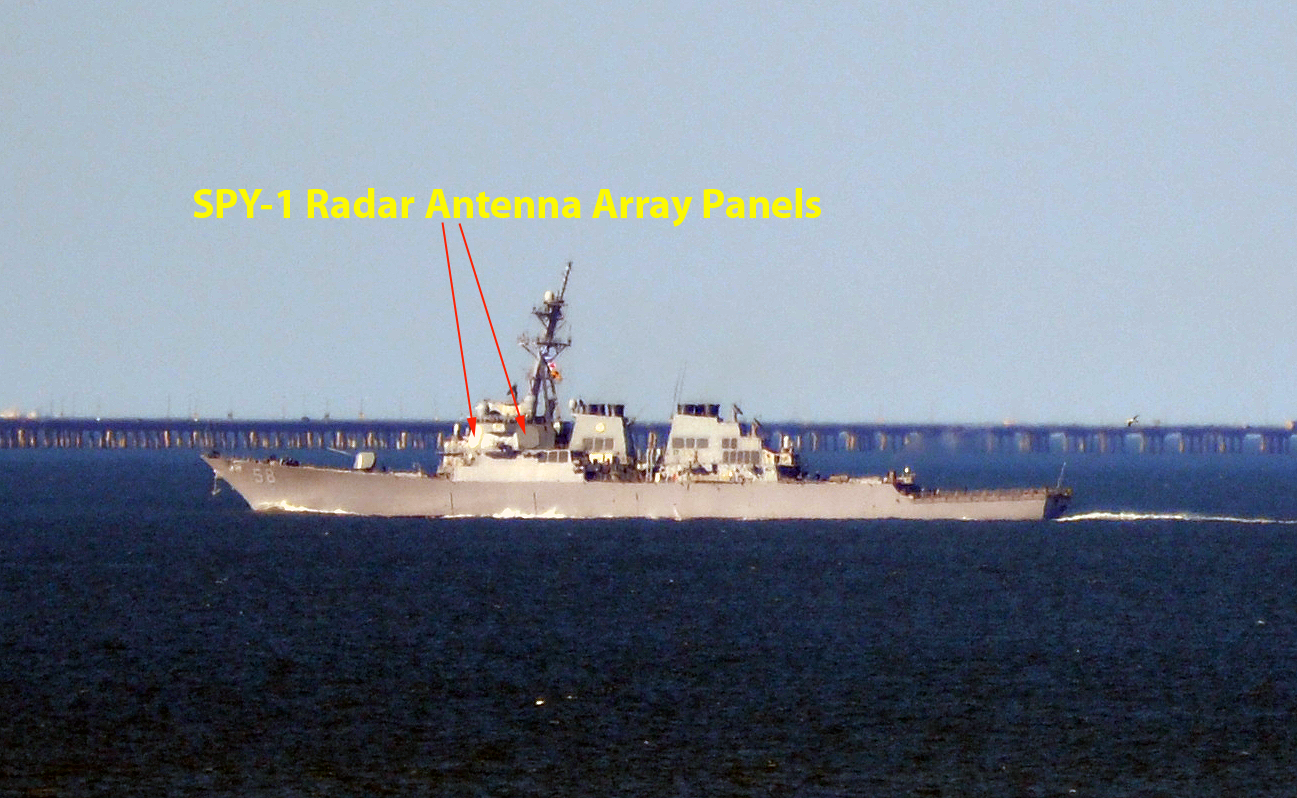The SPY-1 is a U.S. Navy phased array surveillance radar that is a component of the Aegis combat system. It is installed on guided missile cruisers (CG) and guided missile destroyers (DDG). Several variants of the SPY-1, including the -1A, -1B(V), -1D, and -1F are in service, modified to fit specific types of vessels. The -1F is not installed on any U.S. ships.
U.S. land-based test and training sites for the SPY-1 are at Moorestown, NJ, and Wallops Island, VA.
The SPY-1 possesses the following technical characteristics according to ITU-R Recommendation M.1465:
-Modulation: Q7N (angle-modulated, two or more digital channels, no information transmitted)
-Tuning range: 3100-3500 MHz
-Peak tx power into antenna: 4 – 6.4 MW (66 – 68 dBW)
-Antenna gain: 42 dBi
-Peak EIRP: 63 – 101 GW (108-110 dBW)
-Pulse width: 6.4 – 51.2 microseconds
-Pulse repetition rate: 0.152-6 kHz
-Duty cycle: 0.8-2.0%
-Tx bandwidth (-3 dB): 4 MHz
-Average EIRP (=peak EIRP x duty cycle): 504 MW – 2 GW (87-93 dBW)
-Minimum effective isotropic power spectral density: 126 W/Hz (51 dBm/Hz)
-Maximum effective power isotropic spectral density: 500 W/Hz (57 dBm/Hz)
-Antenna type: Phased array
-Beamwidth: 1.7 deg (azimuth and elevation)
-Polarization: Vertical
-Antenna rotation rate: N/A (electronically steered)
The SPY-1 is known to emit very high levels of out-of-band emissions outside of the 3100-3500 MHz band.
|
Frequency Bands |
| Band | Use | Service | Table |
| 3100 - 3500 MHz | SPY-1 Shipborne Air Surveillance Radar | Radiolocation | F |
Associated Files:

SPY-1 phased array antenna panels on the guided missile destroyer USS Laboon, photographed in the Chesapeake Bay near Norfolk, Virginia.
Display this entry in a page by itself
Edit
|
|
|
|